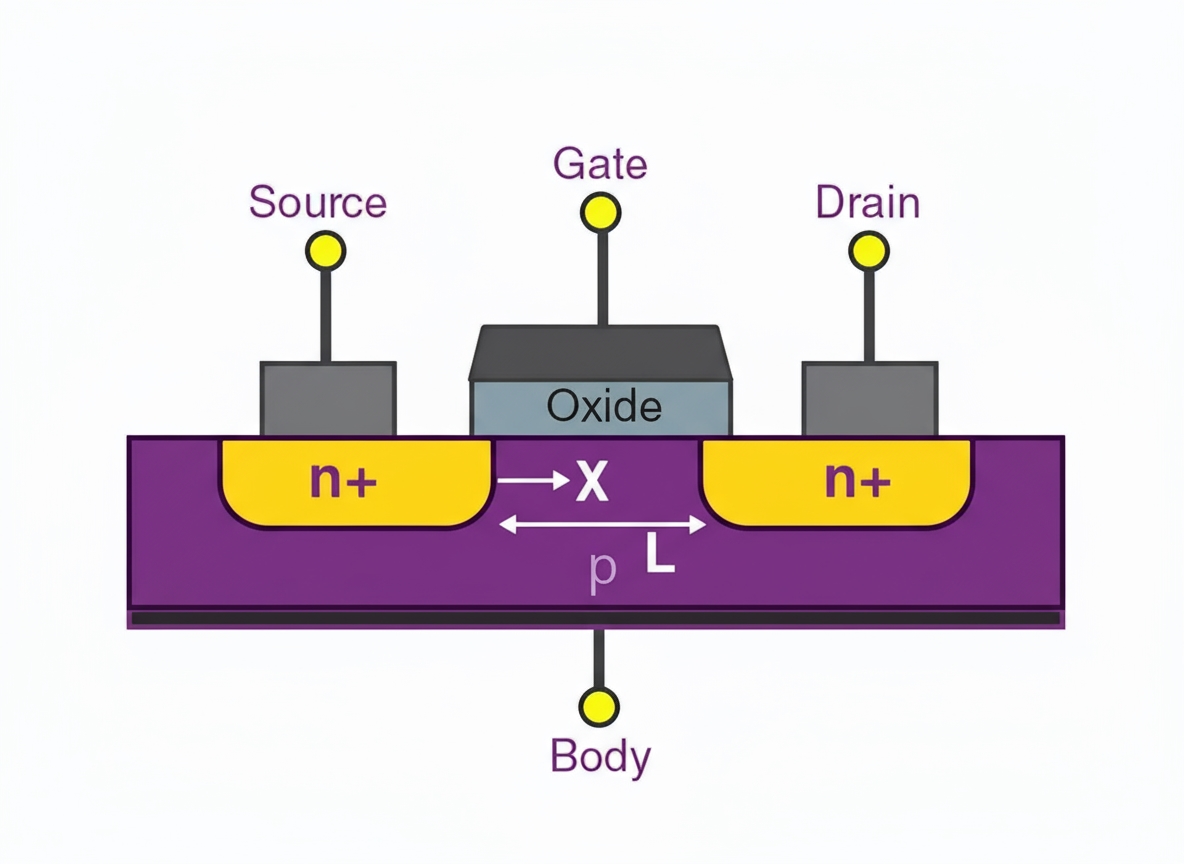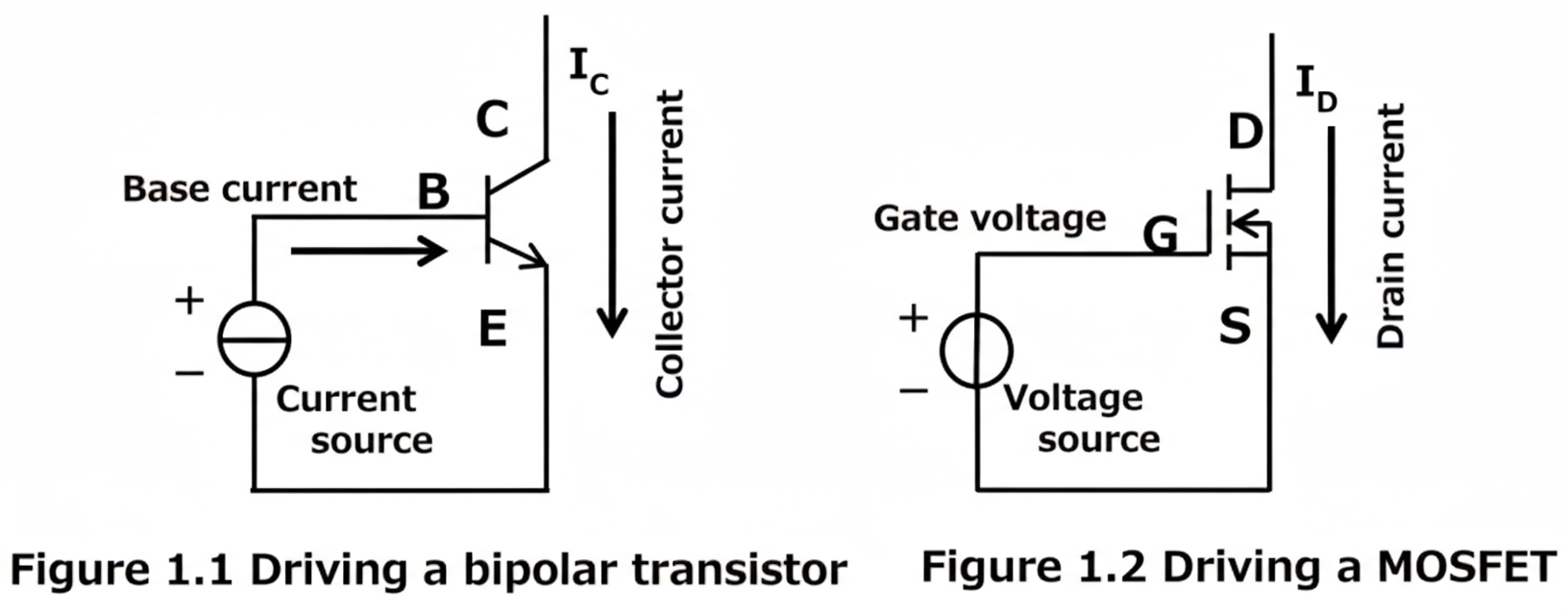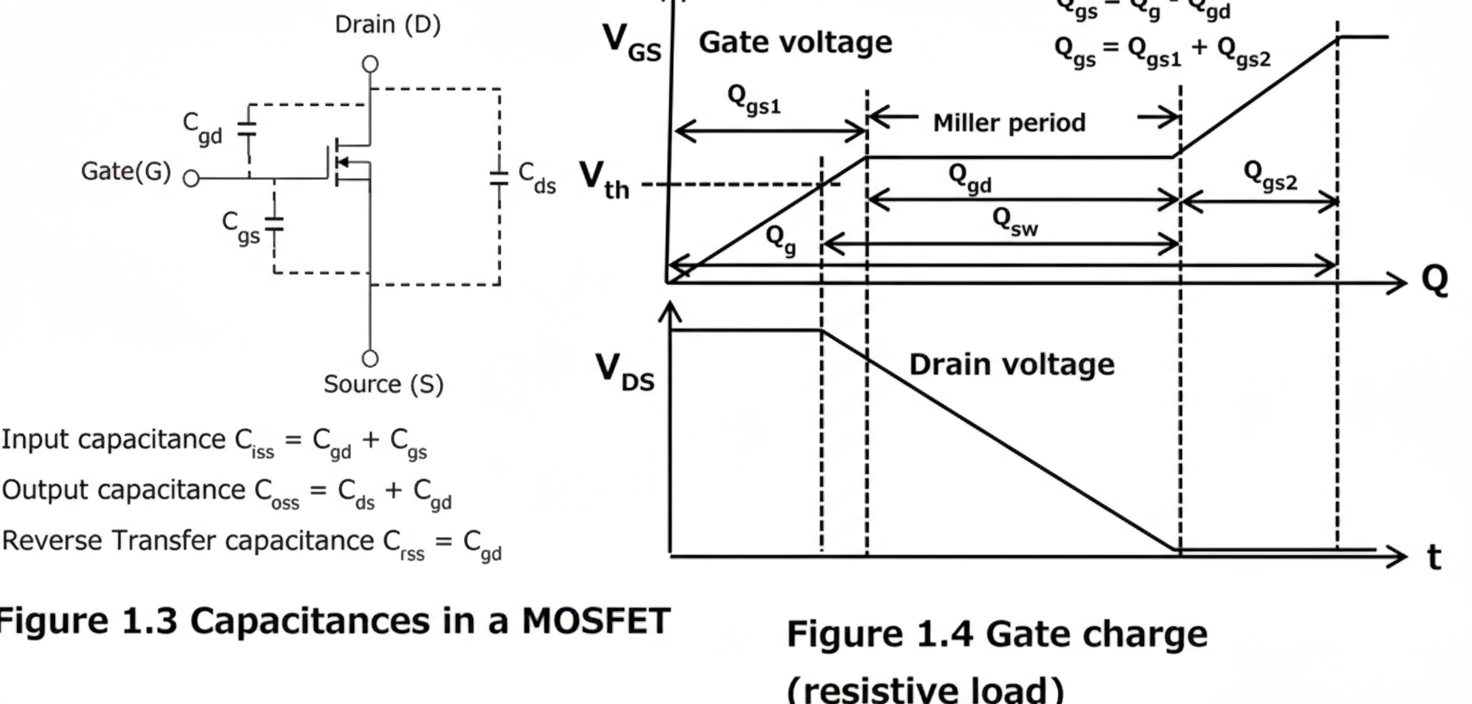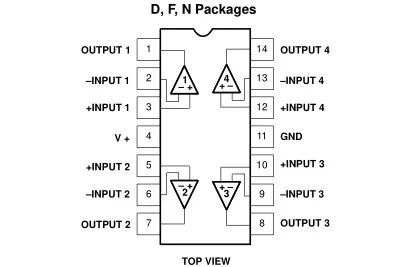1. Driving MOSFETs
1.1 Gate Drive vs Base Drive
Traditional bipolar transistors are current-driven devices, while MOSFETs are voltage-driven devices.

Figure 1.1 shows a bipolar transistor. A current must be applied between base and emitter to produce current at the collector. Figure 1.2 shows a MOSFET: when a voltage is applied between gate and source terminals, current is produced at the drain. The MOSFET gate is made of an oxide layer. Because the gate is insulated from the source, applying a DC voltage to the gate terminal does not, in theory, cause steady-state current to flow into the gate except during transient charging and discharging of the gate. In practice, the gate draws a very small current on the order of picoamperes to nanoamperes. When there is no voltage between the gate and source terminals, no current flows through the drain except leakage current, because the drain-to-source impedance is very high.

1.2 MOSFET Characteristics
MOSFETs have the following characteristics:
- Because MOSFETs are voltage-driven devices, there is no steady-state DC current into the gate.
- To turn a MOSFET on, a voltage greater than the gate threshold voltage Vth must be applied to the gate.
- When in steady on or off states, the MOSFET gate drive essentially consumes no power.
- The gate-to-source capacitance of a MOSFET varies with its internal state, as seen from the driver output.
Typical MOSFET switching frequencies range from a few kHz to several hundred kHz. Low gate-drive power is one advantage of MOSFETs.
1.2.1 Gate Charge
The MOSFET gate can be treated as a capacitor. Figure 1.3 shows the different capacitances inside a MOSFET. The gate voltage will not increase until the input capacitance of the gate is charged, and the MOSFET only conducts once the gate voltage reaches the threshold voltage Vth. The gate threshold voltage Vth is the minimum gate bias voltage required to form a conductive channel between source and drain.
When considering driver circuits and drive current, the gate charge Qg is more useful than the capacitance. Figure 1.4 defines the gate charge parameter required to raise the gate voltage.

 ALLPCB
ALLPCB





